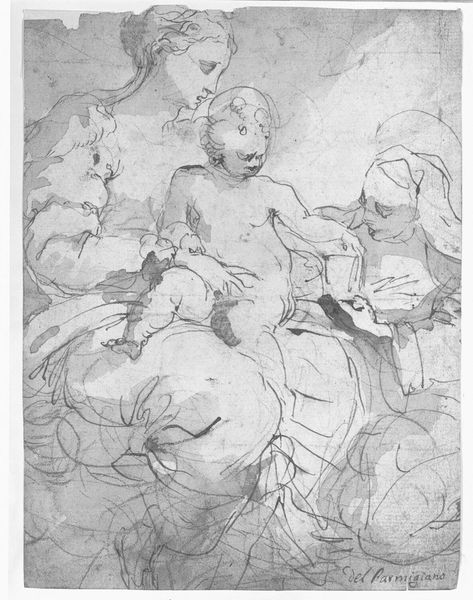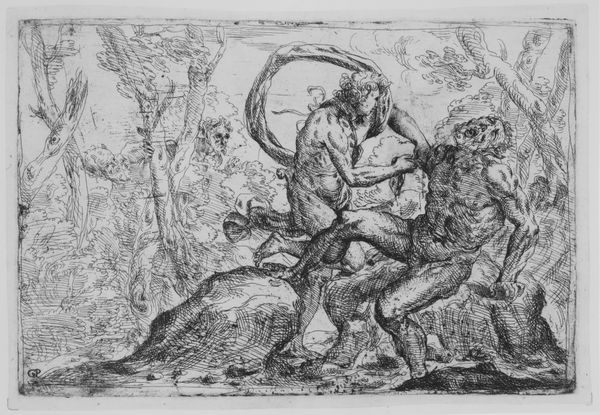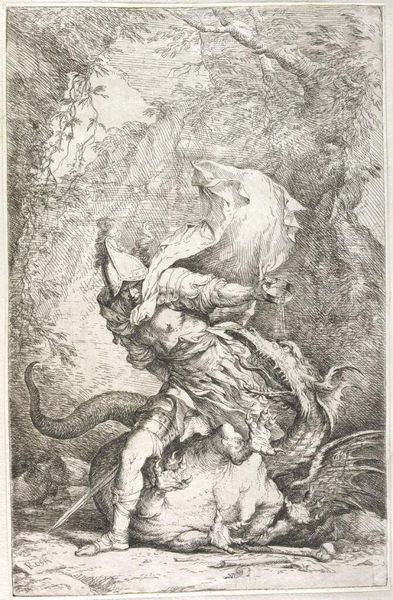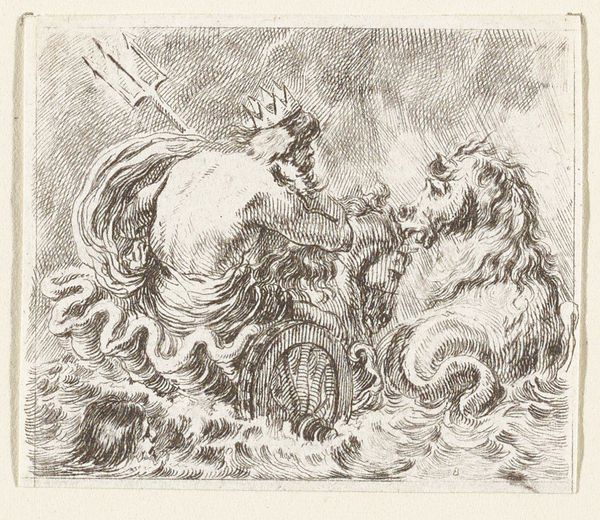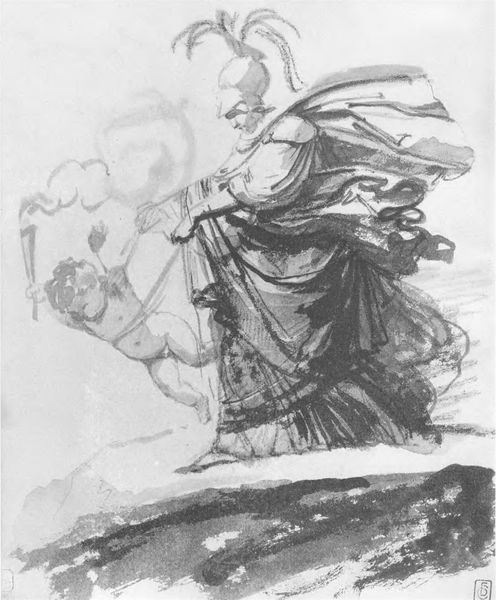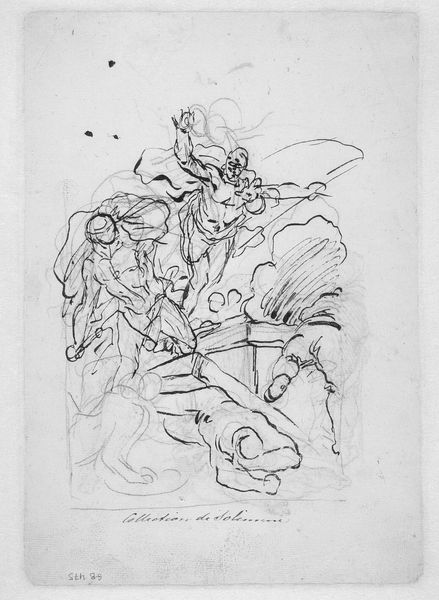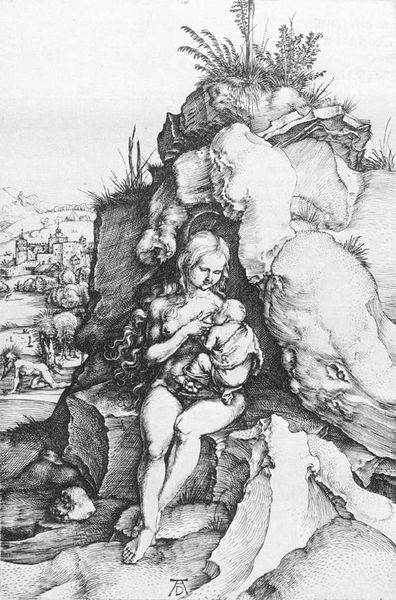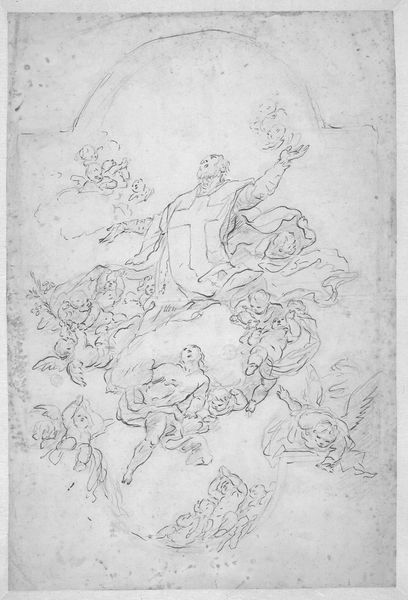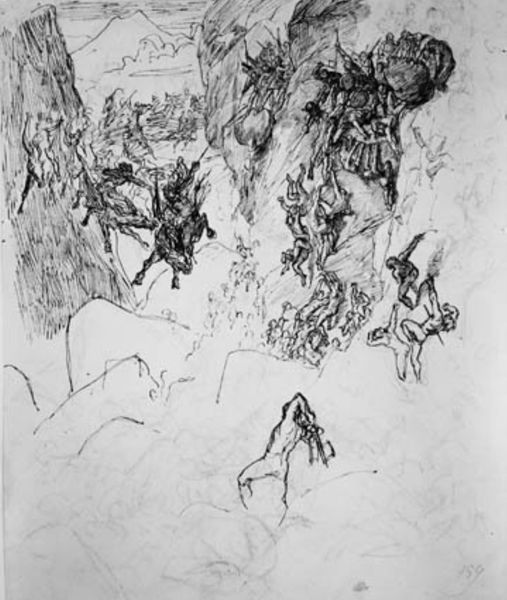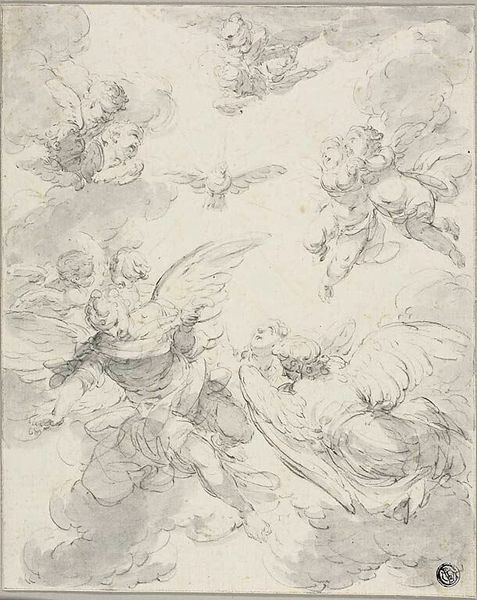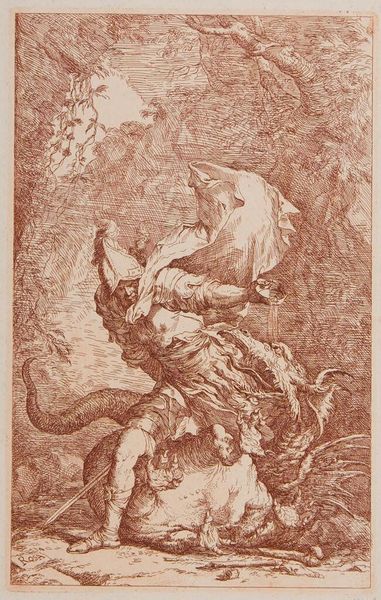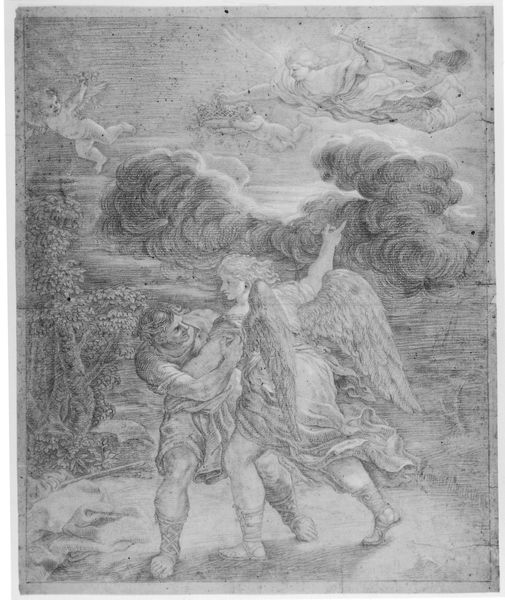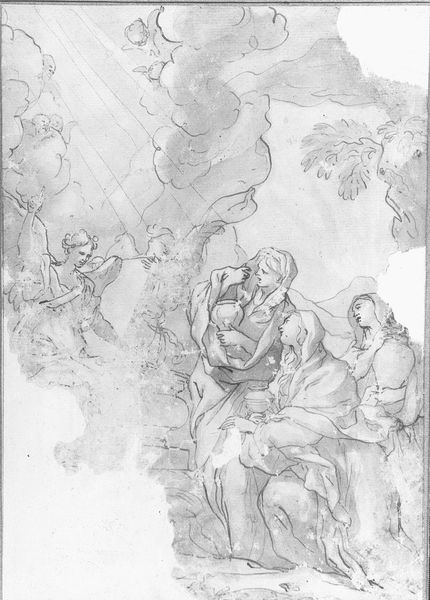
drawing, graphite, charcoal
#
drawing
#
allegory
#
landscape
#
figuration
#
romanticism
#
graphite
#
charcoal
#
history-painting
Copyright: Public domain
Editor: We’re looking at “The Family of Satyrs,” a drawing made with graphite and charcoal by Orest Kiprensky around 1820. It's a playful, energetic scene; the satyrs seem to be reveling in nature. What stories do you think Kiprensky is trying to tell here? Curator: I think Kiprensky's work reflects the Romantic era's fascination with mythology and the primitive. These satyrs, often associated with revelry and nature, represent a counterpoint to the industrialization sweeping through Europe at the time. Considering the socio-political context of 1820, how might we interpret this image as a commentary on societal constraints and a yearning for freedom? Editor: That's a great point! I hadn't thought about it as a response to industrialization. So, the satyrs aren't just figures of mythology; they're symbols of resistance or perhaps escapism? Curator: Exactly! The "naturalness" of the satyrs can be read as a critique of the artificiality and oppression felt within burgeoning urban societies. They present an alternative model—a family, free from the trappings of modernity. But, also consider the potential darker undertones. What do we make of the power dynamics inherently embedded in representations of mythological creatures who were historically used to justify violence? Editor: I see what you mean. It is easy to view them as purely innocent or joyful because of the Romantic framing, but maybe we should instead be critically considering the complex politics around this sort of figuration. Curator: Precisely. Recognizing that the exoticization and idealization of these mythical beings can contribute to harmful stereotypes, reinforces how historical context deepens and complicates the narrative of a seemingly simple image. Editor: This really changes how I see the piece; now I understand this drawing as more than just a mythological scene; it's a lens through which we can examine 19th-century anxieties and power dynamics. Curator: Indeed. It pushes us to question not just what is represented, but *why* and *how* such representations impact societal structures and beliefs.
Comments
No comments
Be the first to comment and join the conversation on the ultimate creative platform.
